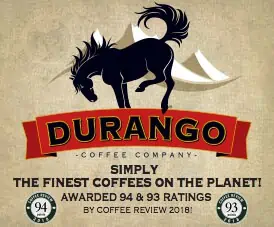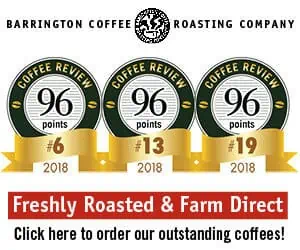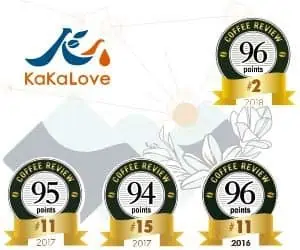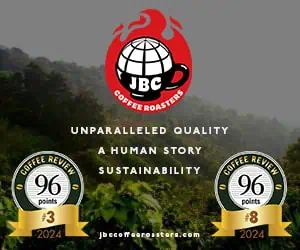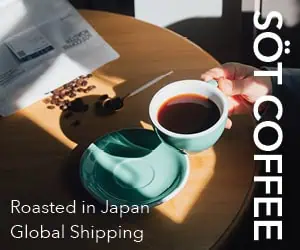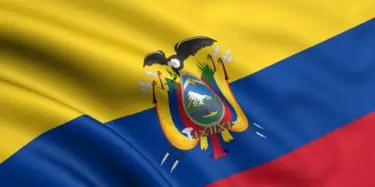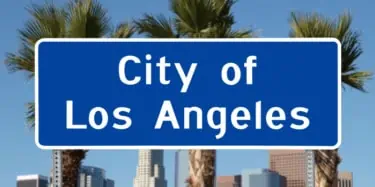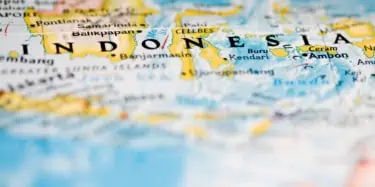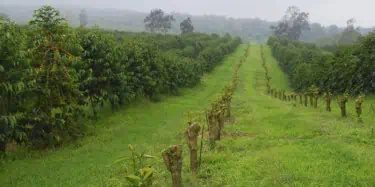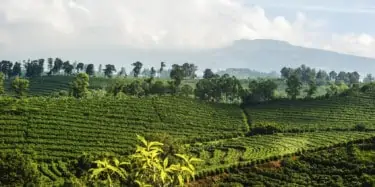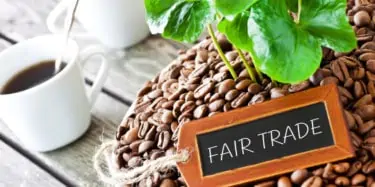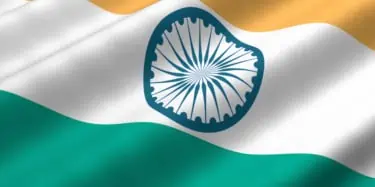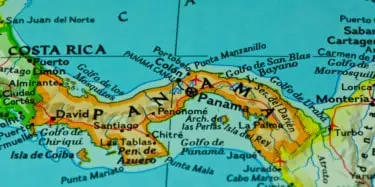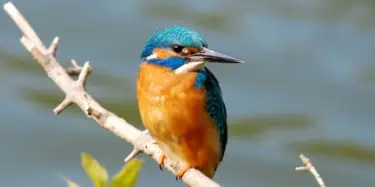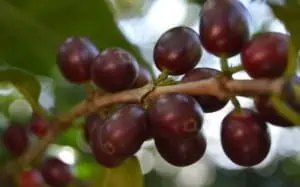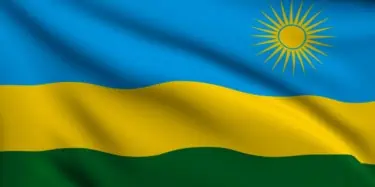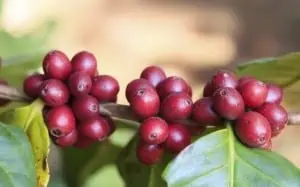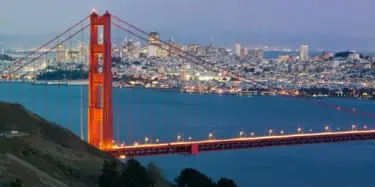Coffee writers need vacations too. What we offer here in place of our usual monthly tasting report is a set of reviews of exceptional coffees that came into the Coffee Review lab during July 2010. The article originally scheduled for August (Tall Milk Espressos) will appear next month. In a sense, this fill-in-for-Ken's-vacation article is a roaster's choice exercise. The roasting companies
Tasting Reports – Most Recent
Coffee Review has published more than 250 monthly coffee tasting reports since February 1997. The most recent tasting reports appear below in reverse chronological order. You may narrow your search by category from the main navigation drop-downs or by using the key word search feature that appears in the page header. The content in tasting reports and associated reviews was correct at the time of publication but may not remain accurate over time.
Pity the Poor Decaf Drinker: Signature Decaf Blends
I am a positive thinker when it comes to coffee, but this month's sampling of fifty decaffeinated blends from thirty of North America's finest specialty roasters tested my optimism. Almost every month our reviews reveal impressive new coffee possibilities powered in part by a fresh generation of specialty coffee roasters and coffee producers. Typically our monthly surveys turn up multiple samples
Along the Andes: Coffees of Ecuador, Bolivia and Peru
The short version is simple: Three coffee origins with massive growing elevations and substantial plantings of traditional varieties of Arabica but with little to no presence in the specialty coffee world suddenly provide us with fifty-three largely impressive, often distinctive coffees. For years Bolivia, despite ideal, very high-altitude terroirs and plantings of the old and respected Typica
Micro to Macro: Southern California Coffees
This month's cupping of forty-two coffees from seventeen southern California roasters hints at a drama that is currently enlivening the coffee scenes of other American metropolises: Newer, smaller roasting companies that put more focus on medium-roasted small lots of precisely sourced coffees are pressing older, often larger companies that produce darker-roasted versions of more generic origins
Mysterious No More: Sumatra Coffees
Ever since specialty coffee pioneer Alfred Peet popularized Sumatra coffees on the menu of his famous Vine Street store, their pungently fruity, earthy/musty profile has attracted a loyal following among American coffee lovers. Along the way they have been regularly tagged "mysterious," a word also often applied to the seldom-visited Indonesian island they come from. Well, mysterious no more, or
Island Coffees: Hawaii and the Caribbean
This month's reviews consider coffees from two famous island growing regions -- Kona and the Blue Mountains of Jamaica -- together with a handful of coffees from less famous island origins: Puerto Rico, Haiti, the Dominican Republic, plus a scattering of non-Kona Hawaii coffees. The conclusions, rather sadly, are predictable for coffee insiders but perhaps a surprise for more casual coffee
Coffees of Sulawesi, Bali, Java, Flores, East Timor
In beverage-world terms, coffees from Indonesia and East Timor could be considered the single-malt whiskies of coffee. Generally absent are the tart fruit and sweet floral notes of the finest pure, high-grown, wet-processed coffees of Latin America and East Africa. In their place are rich, ambiguous notes of nut, aromatic wood, sometimes earth, sometimes a chocolaty fermented fruit. Most of these
Fourteen Covers of a Classic Tune: Mocha Java Blends
Around 1740 Europeans had a rather limited menu of coffees to choose from: Mocha, the world's original commercial coffee from what is now Yemen, and Java, a recent introduction by the Dutch from their colony in the Pacific. Inevitably, these two coffees came together to form the world's first blend. In the years following, other, now more famous, coffees from Latin America began to fill out
Best (or Should-Be-Best) Selling Single Origins 2009
With this month's review we aimed to evaluate those single-origin coffees that sell best all year. We were after the sturdy, consistent coffees that make up the backbone of roasters' single-origin programs, the coffees they absolutely need to have in bags or bins to avoid muttering customers or nasty emails. We hoped to bypass for now the precious and the extraordinary, the tiny lots flown in by
Quality and Fair Trade Certified Coffees
Fair Trade certification has been on a bit of roll of late, steadily expanding both at origin and in the marketplace. Its producer programs have extended from their original base in Central America to more far-flung origins like Ethiopia and Sumatra. Fair Trade certified coffees are now sold in volume in at least one big box store, Sam's Club, and show up in smaller quantities at Target.
Something for Everyone: India Coffees 2009
India is a considerably better-known coffee origin in Europe than in the United States. And even in Europe it tends to be a source whose profound coffee originality is hidden inside blends rather than foregrounded in single-origin or trophy coffees. For example, India provides some of the world's most valuable coffee types for espresso blends, yet these same exotic coffee types are seldom offered
Half Way to Napa? Panamas 2009
The compact coffee growing region of western Panama, rising on the slopes of the 11,300-foot Volcan Baru, is in many respects ideally configured to develop into one of the world's coffee versions of Napa Valley. The region is compact, ideal for coffee growing, and almost all of the production is performed by classic medium-sized, family-owned farms of the kind that best equate with the wine idea
The Devil’s in the Details: Bird-Friendly and Shade-Grown Coffees
Suppose the following: You look out your window and see a suddenly appearing flock of song birds. Or perhaps you hear their familiar, melodic burbling first, then see them. For many of us this is a precious moment, particularly so because we often know that these flitting, vulnerable creatures are only making a brief stopover before moving on until (hopefully) making a return next year. Those who
Botany and the Cup: The Bourbon Conundrum
We know that the species of the tree that produces our coffee profoundly influences how it tastes. And we know to the point of cliche that the arabica species produces all of the world's finest coffees. But what about the various botanical varieties of arabica, the coffee equivalents of wine grape varieties like the Cabernets, Chardonnays, Zinfandels, etc. that figure so prominently in the
Alternative Africas: Rwanda, Burundi, Tanzania
Coffees from the mountain ranges and plateaus that parallel the east coast of Africa are among the most distinctive in the world. The great coffees of Ethiopia and Kenya are by far the best known, but other African countries also produce distinguished Arabicas. For this month's article we review twelve coffees, six from Rwanda, four from Burundi, and two from Tanzania. Rwanda and Burundi
American Espresso Blends: Boutique and Bigger
Specialty espresso is currently in the throes of a creative explosion. I think of it as "post-Italian" espresso, a dynamic community of baristas, blender/roasters and motivated aficionados remaking espresso as a global connoisseur's beverage with passionately contested barista competitions, non-traditional brewing innovations, and freshly conceived blend designs. The goal of this month's
Papua New Guinea: Promise Only Partly Fulfilled
Three or four years ago I was looking out the window of a small airplane banking into a short (very short) grass airstrip serving a coffee-growing village of Papua New Guinea. Everything that makes the highlands of Papua New Guinea one of the most promising coffee growing regions in the world was spread out beneath me. Among all of the coffee terroirs of the world, the lush highland valleys of
San Francisco Bay Area Coffees: Dark and Beyond
Sorry, Seattle and all of those other places, but the American specialty coffee movement started in the San Francisco Bay Area. Of course small artisan coffee roasting companies were long in business before Alfred Peet opened his famous Vine Street store in Berkeley in 1966. Small, roaster-in-the-back-of-the-store coffee companies surviving from the early part of the 20th century doubtless helped
House Blends: Comfort Coffee and Beyond
House blend is a slippery term in coffee. It can suggest the straightforward and reliable, as in "house wine," and it can mean something unusual but local, not to be had elsewhere, as in "only at our house." Plus over the last decade it has taken on still another meaning. You find this last definition operative in the mid-market world of Starbucks and similar upscalish supermarket coffees. Here
Convenience First: Espresso Pods and Capsules
It is no surprise that over the last decade the more moneyed elements of the coffee industry have been trying to figure out how to simplify espresso brewing to the point that a consumer can produce a properly rich, smooth-tasting espresso shot without struggling through a complicated process that can be as daunting as upgrading to Vista or assembling a glass-fronted display case from Ikea. Given

